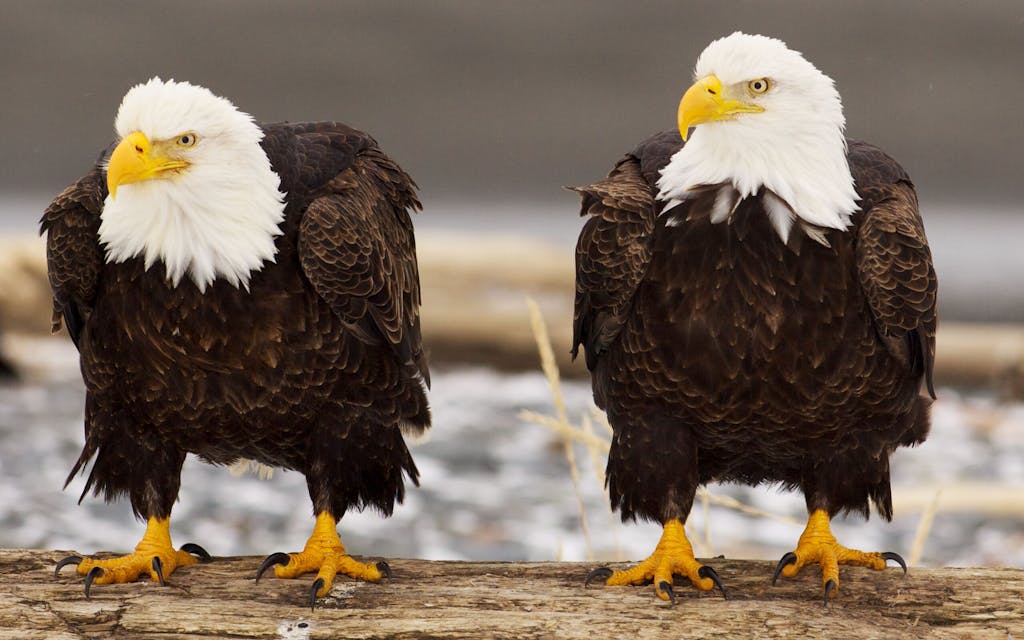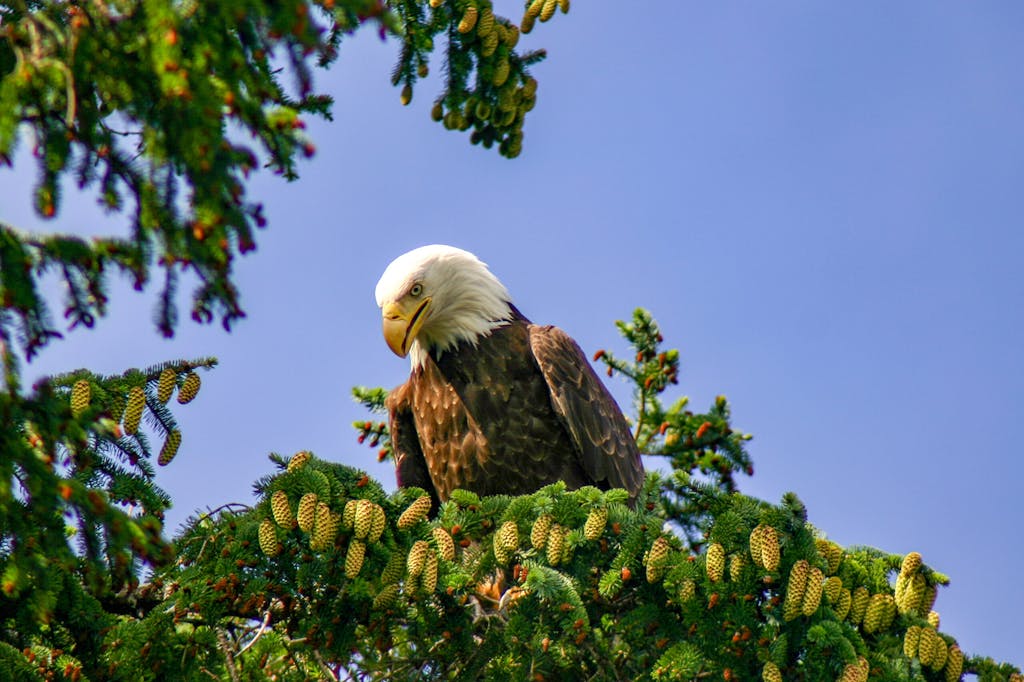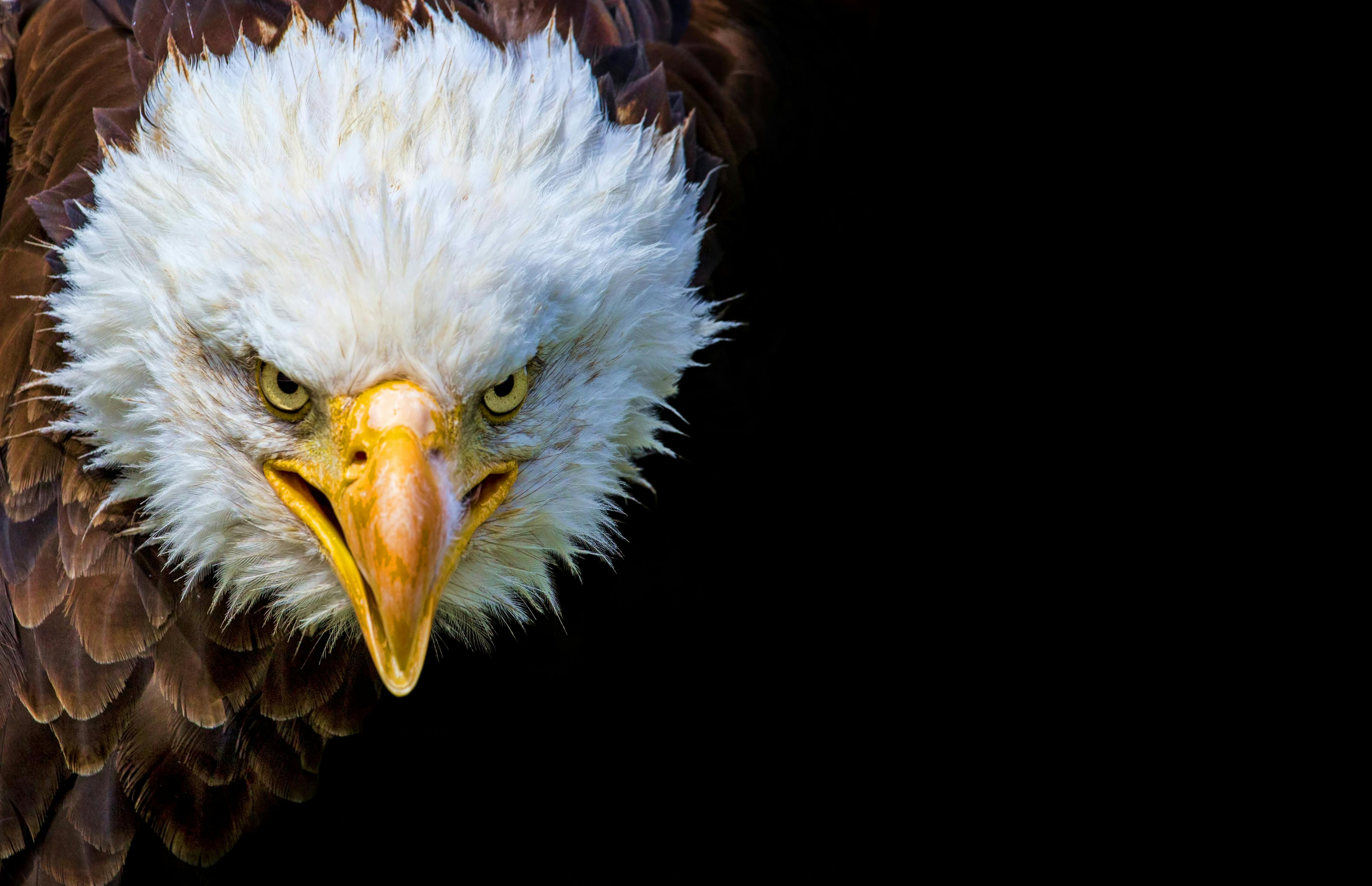Soaring Video Captures the Triumphant Comeback of Alaska’s Bald Eagles
You may know it as Haliaeetus leucocephalus, or perhaps you call it the white-headed sea eagle. But most Americans know it as the bald eagle, a symbol of the United States associated with strength, freedom and integrity.
Not everyone is charmed by this magnificent creature that’s found only in North America (and in the U.S., most abundantly in Alaska). Its wingspan can be much as 8 feet, and its razor-sharp talons are its weapon for hunting and fishing, key to its survival. As birds of prey, bald eagles feast mostly on fish and small mammals, but they have also been known to attack livestock, angering farmers and ranchers.
This raptor, like many other powerful predatory wildlife species, found itself at the center of a love-hate relationship with humans. It was beloved yet simultaneously killed, revered and yet facing extinction.
Expedition filmmaker Ross McDonald captured bald eagles fishing in Sitka, Alaska, handholding his camera as he worked from a Zodiac.
Witnessing their mighty wings spreading and their talons reaching toward the water’s surface is to understand the wild magnificence of bald eagles. His video shows why the raptor is called “the king of the sky” and captures an unforgettable moment behind the lens.
The fascinating history of a feathered icon

The majestic bald eagle became America’s national bird in 1782 and was adopted as the emblem of the United States in 1787. It appears on the Great Seal of the USA, a symbol of national identity. Native Americans consider it sacred and believe its feathers to have healing powers.
In the late 1800s, the U.S. was home to about 100,000 nesting bald eagles, but numbers plummeted in the early 20th century because the birds threatened wildlife and stock and were targeted for elimination. In 1940, the Bald and Golden Eagle Protection Act became part of the U.S. Code, which made it illegal to possess, sell or hunt bald eagles (including their feathers, nests, eggs and body parts). Alaska was exempt from this, and from 1917 to 1952, more than 100,000 eagles were killed.
By the middle of the 20th century, America’s national emblem was almost history.
Once it was legally protected, the species began to recover, but not for long. The negative impact that the agricultural insecticide DDT was having on wildlife, including bald eagles, began to emerge. When the birds ate fish from streams and rivers contaminated with DDT, the shells of the eggs they laid became thinner and weaker, causing them to break during incubation.
By 1963, less than 500 mating pairs of bald eagles existed in the United States.
A monumental recovery

DDT was banned in 1972 and, coupled with habitat improvement and monumental conservation efforts, bald eagles started to come back.
By 2007, the number of nesting pairs across the country increased to 11,000, and the raptor disappeared from the endangered or threatened species list.
Today, the bald eagle population is more than 300,000 in the lower 48. Alaska’s population is estimated at 30,000, more than three-quarters of them breeding population. You’ll find eagle cams in many states that unobtrusively focus on the eagles, especially as they lay and incubate eggs.
The effort to bring these birds of prey back from the brink of extinction is a point of pride for those who aided in the conservation and environmental efforts that enabled their return.
The bald eagle remains a symbol of strength and resilience, and sighting them during cruises to Alaska or elsewhere in North America is a thrill that reminds us of the good that comes from uniting for a common goal. But the bald eagle also deserves some credit. “Turbulence,” Canadian author and philosopher Matshona Dhliwayo tells us, “breaks a tree’s branches but only tickles an eagle’s wings.”
